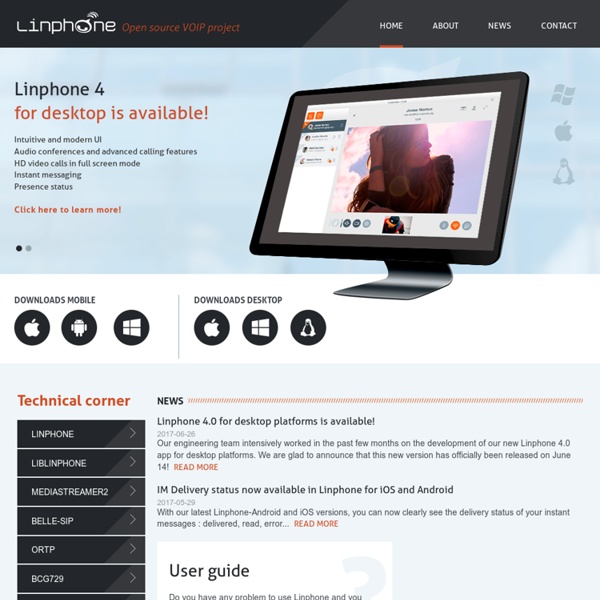Linphone open-source voip software - video sip phone, voip phone

click-to-call · receive calls on your SIP softphone, mobile or fixed line from your website visitors
Instantbird
Gajim, a Jabber/XMPP client
Apps/Empathy
Empathy is a messaging program which supports text, voice, video chat, and file transfers over many different protocols. You can tell it about your accounts on all those services and do all your chatting within one application. Empathy uses Telepathy for protocol support and has a user interface based on Gossip. Empathy is the default chat client in current versions of GNOME, making it easier for other GNOME applications to integrate collaboration functionality using Telepathy. Current features Multi-protocol: Google Talk (Jabber/XMPP), MSN, IRC, Salut, AIM, Facebook, Yahoo! Screenshots Project Resources Download/Install/Source Code Frequently Asked Questions Troubleshooting Developers How to contribute using GIT Roadmap: Overview of what's being worked on and what's planned for the future Unreviewed patches Internship ideas Style Empathy's code is currently a mess regarding coding style. Bugs Hacking Just dive in!
Pidgin, the universal chat client
Related:
Related:



